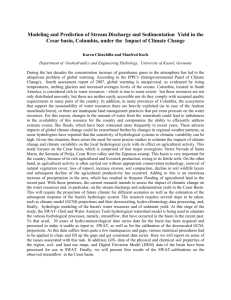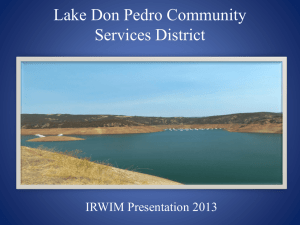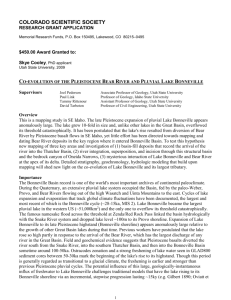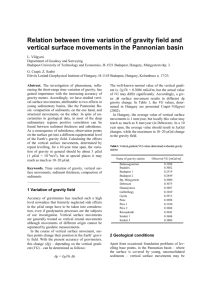2014_Pacific_FOP_1st.. - Friends of the Pleistocene
advertisement
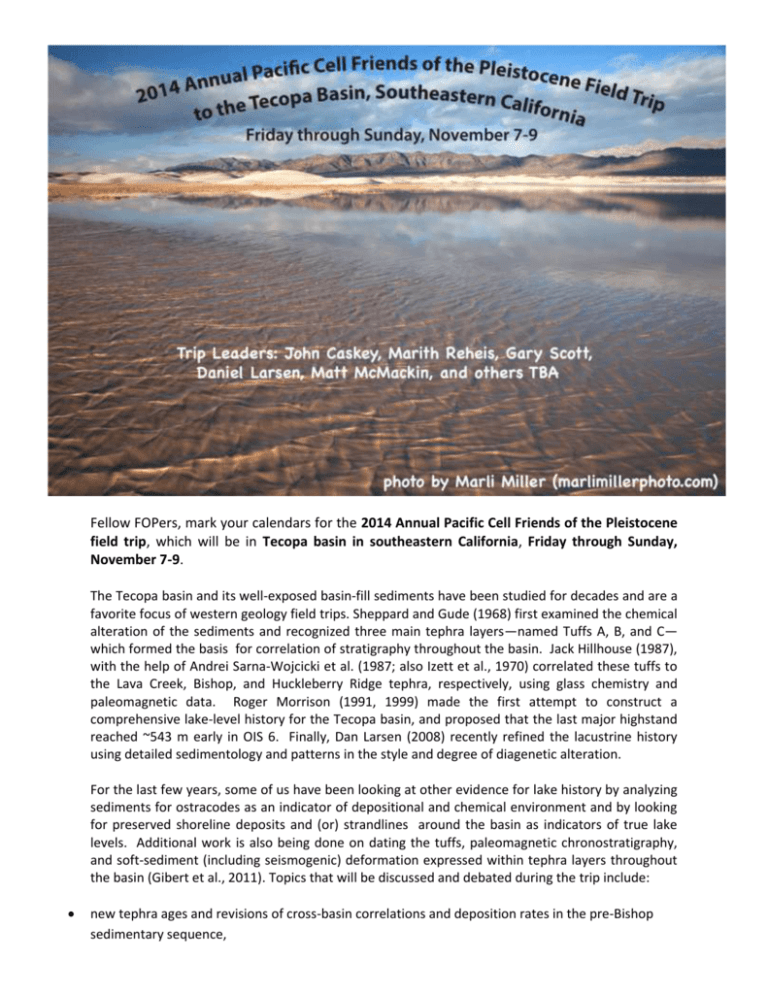
Fellow FOPers, mark your calendars for the 2014 Annual Pacific Cell Friends of the Pleistocene field trip, which will be in Tecopa basin in southeastern California, Friday through Sunday, November 7-9. The Tecopa basin and its well-exposed basin-fill sediments have been studied for decades and are a favorite focus of western geology field trips. Sheppard and Gude (1968) first examined the chemical alteration of the sediments and recognized three main tephra layers—named Tuffs A, B, and C— which formed the basis for correlation of stratigraphy throughout the basin. Jack Hillhouse (1987), with the help of Andrei Sarna-Wojcicki et al. (1987; also Izett et al., 1970) correlated these tuffs to the Lava Creek, Bishop, and Huckleberry Ridge tephra, respectively, using glass chemistry and paleomagnetic data. Roger Morrison (1991, 1999) made the first attempt to construct a comprehensive lake-level history for the Tecopa basin, and proposed that the last major highstand reached ~543 m early in OIS 6. Finally, Dan Larsen (2008) recently refined the lacustrine history using detailed sedimentology and patterns in the style and degree of diagenetic alteration. For the last few years, some of us have been looking at other evidence for lake history by analyzing sediments for ostracodes as an indicator of depositional and chemical environment and by looking for preserved shoreline deposits and (or) strandlines around the basin as indicators of true lake levels. Additional work is also being done on dating the tuffs, paleomagnetic chronostratigraphy, and soft-sediment (including seismogenic) deformation expressed within tephra layers throughout the basin (Gibert et al., 2011). Topics that will be discussed and debated during the trip include: new tephra ages and revisions of cross-basin correlations and deposition rates in the pre-Bishop sedimentary sequence, depositional environments (lacustrine vs. ground-water discharge vs. playa) and diagenetic alteration of basin sediments, revisions to the lake-level history of the basin, north-side-up deformation of the basin reflected in middle Pleistocene shoreline deposits, the nature of the lake threshold and possible lake-level lowering and stabilization during the terminal lake stand, timing of Amargosa River integration with the Tecopa and Death Valley watersheds, new observations tying the OIS 6 shoreline-level history of pluvial Lake Manly to the well-dated and studied Badwater core, and seismogenically-induced liquefaction-induced deformation observed throughout the basin. We recognize that many others have worked or may now be working on projects related to Tecopa basin history and we invite anyone who has new information to present it and join in the fun. It would be nice to know who those folks are ahead of time so please get in touch with one of us over the next few months. We do not intend to put together a large collection of guidebook articles with the field trip road log, but rather short summaries of some of the new observations a few diagrams, and links to previously published papers as background. Look for the downloadable guidebook in early October (or later, but before the trip—scouts honor!). See you in Tecopa! John Caskey, Marith Reheis, Gary Scott, Dan Larsen, Matt McMackin, and others Short Bibliography Gibert, L., Alfaro, P., García-Tortosa, F.J., and Scott, G.R., 2011. Superposed deformed beds produced by single earthquakes (Tecopa Basin, California): Insights into paleoseismology. Sedimentary Geology 235, 148–159. Hillhouse, J.W., 1987. Late Tertiary and Quaternary geology of the Tecopa basin, southeastern California. U.S. Geological Survey. Izett, G.A., Wilcox, R.E., Powers, H.A., and Desborough, G.A., 1970. The Bishop ash bed, a Pleistocene marker bed in the western United States. Quaternary Research 1, 121-132. Larsen, D., 2008. Revisiting silicate authigenesis in the Pliocene-Pleistocene Lake Tecopa beds, southeastern California: Depositional and hydrological controls. Geosphere 4, 612-639. Morrison, R.B., 1991. Quaternary stratigraphic, hydrologic, and climatic history of the Great Basin, with emphasis on Lakes Lahontan, Bonneville, and Tecopa, In: Morrison, R.B. (Ed.), Quaternary Nonglacial Geology: Conterminous U.S. Geological Society of America, Boulder, Colorado, DNAG v. K-2, 283-320. Morrison, R.B., 1999. Lake Tecopa: Quaternary geology of Tecopa Valley, California, a multimillionyear record and its relevance to the proposed nuclear-waste repository at Yucca Mountain, Nevada, In: Wright, L.A., Troxel, B.W. (Eds.), Cenozoic Basins of the Death Valley Region. Geological Society of America Special Paper 333, 301-344. Sarna-Wojcicki, A.M., Morrison, S.D., Meyer, C.E., and Hillhouse, J.W., 1987. Correlation of upper Cenozoic tephra layers between sediments of the western United States and eastern Pacific Ocean, and comparison with biostratigraphic and magetostratigraphic age data. Geological Society of America Bulletin 98, 207-223. Sheppard, R.A., and Gude, A.J., III, 1968. Distribution and genesis of authigenic silicate minerals in tuffs of Pleistocene Lake Tecopa, Inyo County, California: U. S. Geological Survey Professional Paper 597, 38 p.
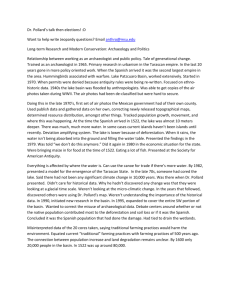




![Georgina Basin Factsheet [DOCX 1.4mb]](http://s3.studylib.net/store/data/006607361_1-8840af865700fceb4b28253415797ba7-300x300.png)
